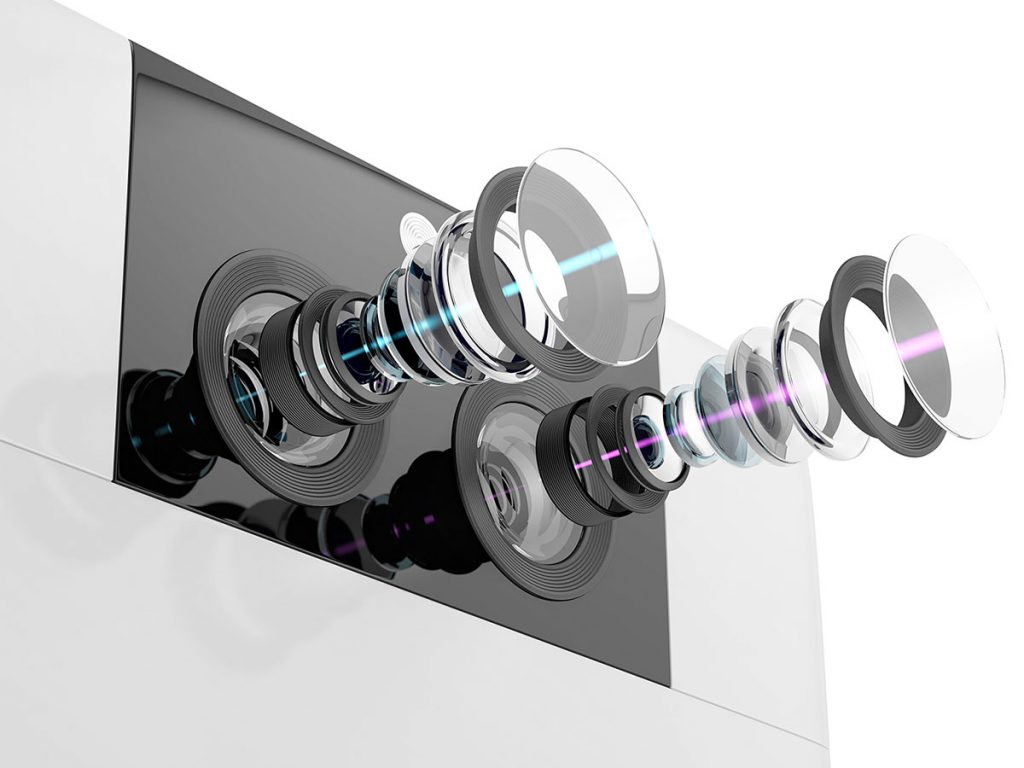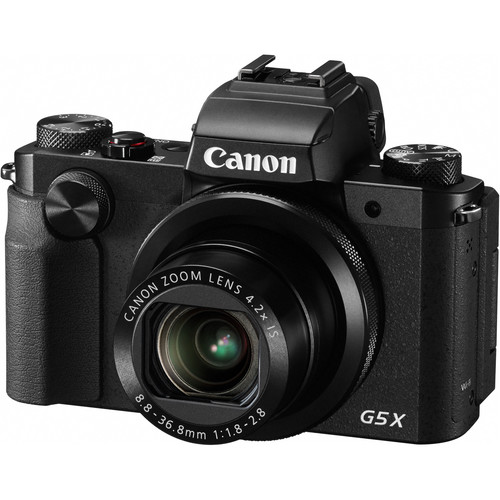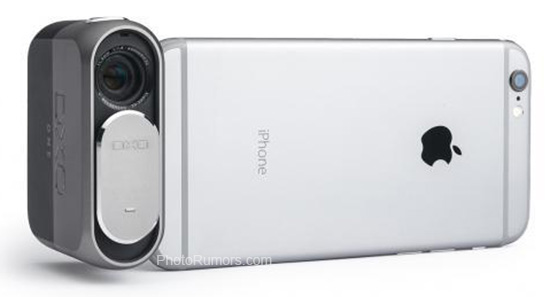Submitted by David Cardinal on Mon, 03/11/2019 - 10:55
Even those of us who consider ourselves serious photographers don’t always want to deal with lugging a large camera and laptop everywhere. Each year smartphones become a more-capable alternative, but making the most out of mobile photography still takes some careful planning and decisions about your workflow. The last 12 months have introduced new tools, and new smartphone camera features, so we’re pleased to present a new version of our .
Submitted by David Cardinal on Thu, 02/21/2019 - 10:41
 It’s no secret that smartphone’s are now by far the most popular cameras worldwide, as they become increasingly capable. While improvements in image processing, sensors, and optics have helped them catch up to more traditional cameras, many of their recent gains can be attributed to the creative use of multiple camera modules. That’s an option that standalone camera makers have experimented with (stereo and 360-degree models, for example), but have never pushed very far. .
It’s no secret that smartphone’s are now by far the most popular cameras worldwide, as they become increasingly capable. While improvements in image processing, sensors, and optics have helped them catch up to more traditional cameras, many of their recent gains can be attributed to the creative use of multiple camera modules. That’s an option that standalone camera makers have experimented with (stereo and 360-degree models, for example), but have never pushed very far. .
Submitted by David Cardinal on Tue, 05/29/2018 - 08:15
 We’re just back from a very productive photo safari to Botswana and South Africa. We had a great group of participants, and had day after day of amazing wildlife experiences at two really excellent camps. Our personalized tour through the sights and sounds of Soweto was also a unique experience. While I brought and mostly shot with my traditional and DSLRs, I also brought along two flagship smartphones and put them to the test. You can read about what I found they were great for, what they couldn’t do, and get some tips on how to use one on your next safari in . Quick note: We’re starting to organize another high-end photo safari to Botswana and South Africa, possibly invitation only and probably Spring, 2020. If you’d like to be kept in the loop email us at .
We’re just back from a very productive photo safari to Botswana and South Africa. We had a great group of participants, and had day after day of amazing wildlife experiences at two really excellent camps. Our personalized tour through the sights and sounds of Soweto was also a unique experience. While I brought and mostly shot with my traditional and DSLRs, I also brought along two flagship smartphones and put them to the test. You can read about what I found they were great for, what they couldn’t do, and get some tips on how to use one on your next safari in . Quick note: We’re starting to organize another high-end photo safari to Botswana and South Africa, possibly invitation only and probably Spring, 2020. If you’d like to be kept in the loop email us at .
Submitted by David Cardinal on Tue, 03/07/2017 - 09:51
Until now, HDR capture on smartphones has been an under-the-covers merging of several frames in a fairly simple way by the phone itself. Now, Lightroom Mobile offers pro-grade HDR for supported phones. The app’s camera mode will analyze the scene, decide on the needed bracketing, capture the images in RAW mode, and then combine and tonemap them into a 32-bit floating-point DNG RAW file – allowing full HDR editing. This is pretty amazing when you consider that typically a similar workflow involves bracketing on a high-end camera, and the use of specialized software applications to do the merge and tone mapping. It works on the Apple iPhone 6s and later, Samsung Galaxy 7 and 7 edge, and Google’s Pixel family of phones. For users of other phones, there are still some goodies packed into the new version of Lightroom mobile:
Submitted by David Cardinal on Wed, 01/20/2016 - 08:13
 Up until now, the choice for best point and shoot was tricky – none of the three leading cameras had everything. The got top marks for image quality and has a good zoom range, but no viewfinder. The sort-of-has a viewfinder (it is a small pop-up), but has a limited zoom range and is a little lower-scoring on image quality. The somewhat older is also a worthy competitor, but its larger size isn’t justified by image quality or features. Canon has finally broken the logjam with its new . This new model adds an excellent Electronic ViewFinder (EVF) and a hot shoe for an add-on flash. There are also some other, smaller, updates to video recording formats and other features, but the EVF and hot shoe are clearly the headline here.
Up until now, the choice for best point and shoot was tricky – none of the three leading cameras had everything. The got top marks for image quality and has a good zoom range, but no viewfinder. The sort-of-has a viewfinder (it is a small pop-up), but has a limited zoom range and is a little lower-scoring on image quality. The somewhat older is also a worthy competitor, but its larger size isn’t justified by image quality or features. Canon has finally broken the logjam with its new . This new model adds an excellent Electronic ViewFinder (EVF) and a hot shoe for an add-on flash. There are also some other, smaller, updates to video recording formats and other features, but the EVF and hot shoe are clearly the headline here.
Submitted by David Cardinal on Thu, 06/18/2015 - 06:58
 I’ve been working with a very exciting new camera that I’m happy to be able to tell you about now that it has been announced. It is called simply the ONE, from image processing software vendor DxO. DxO has used its industry-leading expertise in evaluating cameras and lenses, and creating image processing pipelines, to create a camera that works seamlessly with your iPhone, but produces much better images. The ONE is built around a 1-inch sensor – far larger than the ones found in mobile devices, including the one in the iPhone. It’s the same size sensor that’s found in much larger, high-end, compact cameras like the – that are also more expensive.
I’ve been working with a very exciting new camera that I’m happy to be able to tell you about now that it has been announced. It is called simply the ONE, from image processing software vendor DxO. DxO has used its industry-leading expertise in evaluating cameras and lenses, and creating image processing pipelines, to create a camera that works seamlessly with your iPhone, but produces much better images. The ONE is built around a 1-inch sensor – far larger than the ones found in mobile devices, including the one in the iPhone. It’s the same size sensor that’s found in much larger, high-end, compact cameras like the – that are also more expensive.

 It’s no secret that smartphone’s are now by far the most popular cameras worldwide, as they become increasingly capable. While improvements in image processing, sensors, and optics have helped them catch up to more traditional cameras, many of their recent gains can be attributed to the creative use of multiple camera modules. That’s an option that standalone camera makers have experimented with (stereo and 360-degree models, for example), but have never pushed very far.
It’s no secret that smartphone’s are now by far the most popular cameras worldwide, as they become increasingly capable. While improvements in image processing, sensors, and optics have helped them catch up to more traditional cameras, many of their recent gains can be attributed to the creative use of multiple camera modules. That’s an option that standalone camera makers have experimented with (stereo and 360-degree models, for example), but have never pushed very far. 

 Up until now, the choice for best point and shoot was tricky – none of the three leading cameras had everything. The
Up until now, the choice for best point and shoot was tricky – none of the three leading cameras had everything. The  I’ve been working with a very exciting new camera that I’m happy to be able to tell you about now that it has been announced. It is called simply the ONE, from image processing software vendor DxO. DxO has used its industry-leading expertise in evaluating cameras and lenses, and creating image processing pipelines, to create a camera that works seamlessly with your iPhone, but produces much better images. The ONE is built around a 1-inch sensor – far larger than the ones found in mobile devices, including the one in the iPhone. It’s the same size sensor that’s found in much larger, high-end, compact cameras like the
I’ve been working with a very exciting new camera that I’m happy to be able to tell you about now that it has been announced. It is called simply the ONE, from image processing software vendor DxO. DxO has used its industry-leading expertise in evaluating cameras and lenses, and creating image processing pipelines, to create a camera that works seamlessly with your iPhone, but produces much better images. The ONE is built around a 1-inch sensor – far larger than the ones found in mobile devices, including the one in the iPhone. It’s the same size sensor that’s found in much larger, high-end, compact cameras like the 